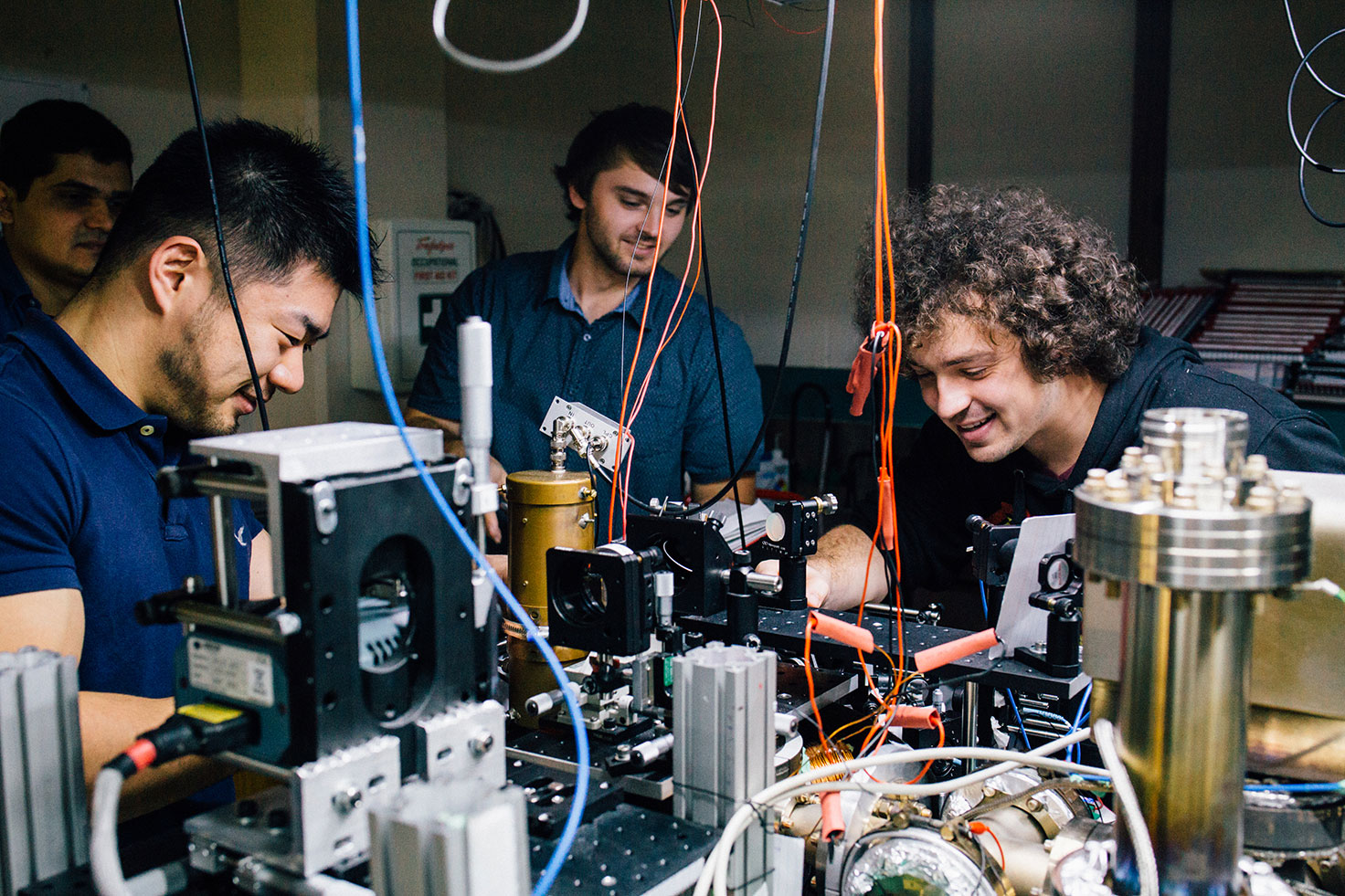
Ion-Photon Interface for Scalable Quantum Networking
- Post by: admin
- 12:14PM Nov 27, 2017
- Comments off
Research into quantum networking has received widespread interest for its promise of guaranteed communication security and interfacing with quantum computers [1]. Information is encoded into quantum systems as quantum bits or qubits. Quantum communications over long distances requires qubits, encoded into photons, to remain coherent. With photon loss this distance is limited to less than 100 km. For a global quantum network we need to extend this range for which we can use a quantum repeater [2]. Quantum repeaters use a series of entanglement swapping operations to establish an entangled pair at some arbitrary distance which we can use for quantum teleportation.
Trapped ions is one of the leading approach for quantum networking. We use Ytterbium ions for their desirable energy level structure – a relatively simple structure which is suitable for laser cooling and a large hyperfine splitting used to encode atomic qubits. Trapped ions still have several challenges to overcome. Two major limiting factors to trapped ion technologies is system scalability and efficient collection of ion fluorescence, which is key for state preparation and readout.

Our micro fabricated ion trap showing ion trapping and diffractive mirrors for efficient ion light collection.

Ion-Fibre coupling via the integrated diffractive mirror.
In our laboratory we use a micro fabricated surface ion trap which was realized by the Georgia Tech Research institute. Our trap has a set of integrated diffractive optical elements on its surface that enable an efficient interface between the trapped ion and the collection of its emitted photons. The optical elements were fabricated by the Fraunhaufer Institute which patterned diffractive mirrors onto the central ground electrode of our trap. These optics are a scalable solution being only 80×127 um in size and allow the conversion between atomic qubits and photonic qubits due to high imaging quality and high ion-fibre coupling efficiency as shown in our paper [3].
Once the qubit, encoded in the ion energy levels, has been converted into a photon, its transmission over long distances is limited by loss and decoherence. Ytterbium ions emit in the UV making optical fibres very lossy. To reduce the photon loss, we are currently developing a protocol for frequency conversion of the ion fluorescence from UV to telecom wavelengths using non-linear Lithium Niobate waveguides [4]. We use a
strong pump which interacts with single UV photons from the ion via difference frequency generation to produce photons in telecom bands.
We are working towards creating a quantum repeater node using the trapped ion platform and integrating this with current fibre systems using waveguides for frequency conversion.
[1] Kimble, H. J. The quantum internet, Nature, 2008, 453, 1023-1030
[2] N. Sangouard, R. Dubessy and C. Simon, Quantum repeaters based on single trapped ions, Physical Review A 79, 042340 (2009)
[3] M. Ghadimi, et al., Scalable ion-photon quantum interface based on integrated diffractive mirrors, NPJ Quantum Information 3 (2017).
[4] S. Kasture, et al., Frequency conversion between UV and telecom wavelengths in a lithium niobate waveguide for quantum communication with Yb+ trapped ions, Journal of Optics, 2016, 18 For the main research page I would also like an abstract of your research and a figure.
